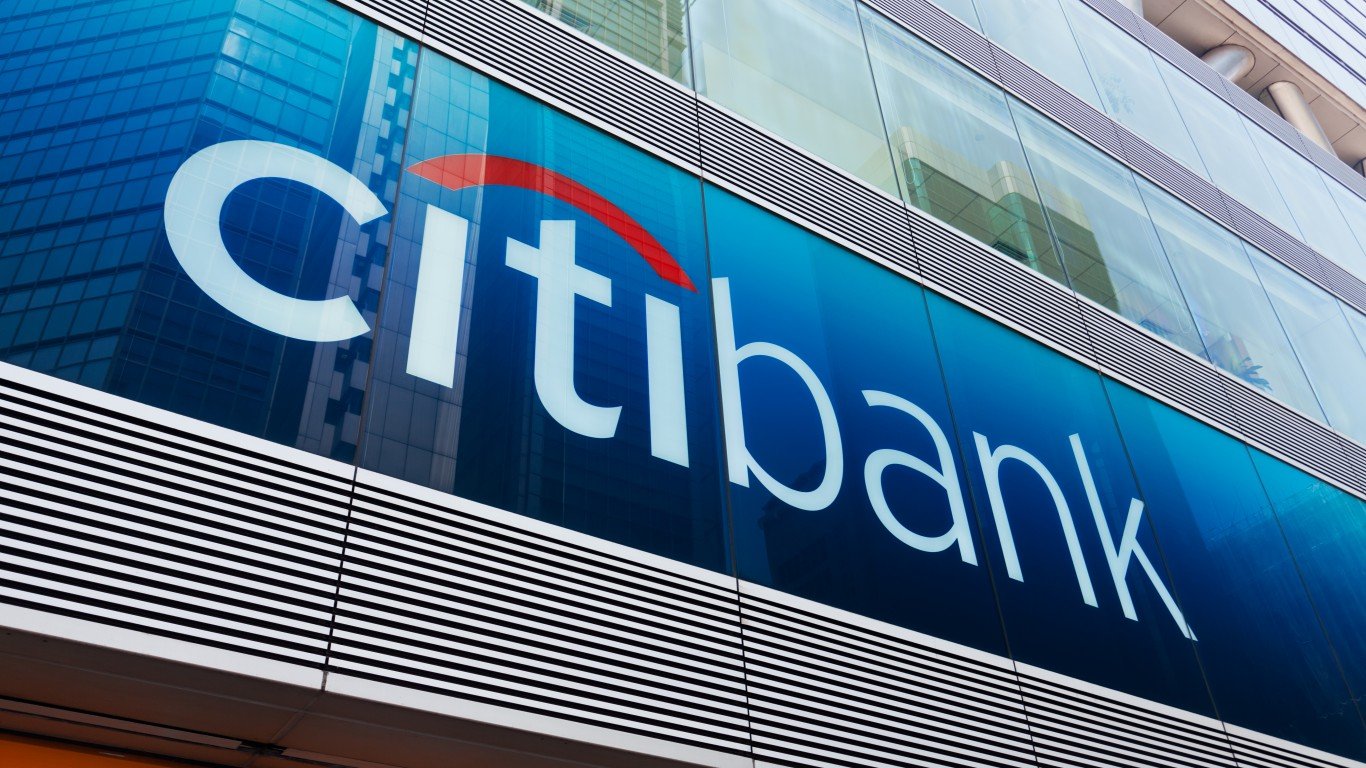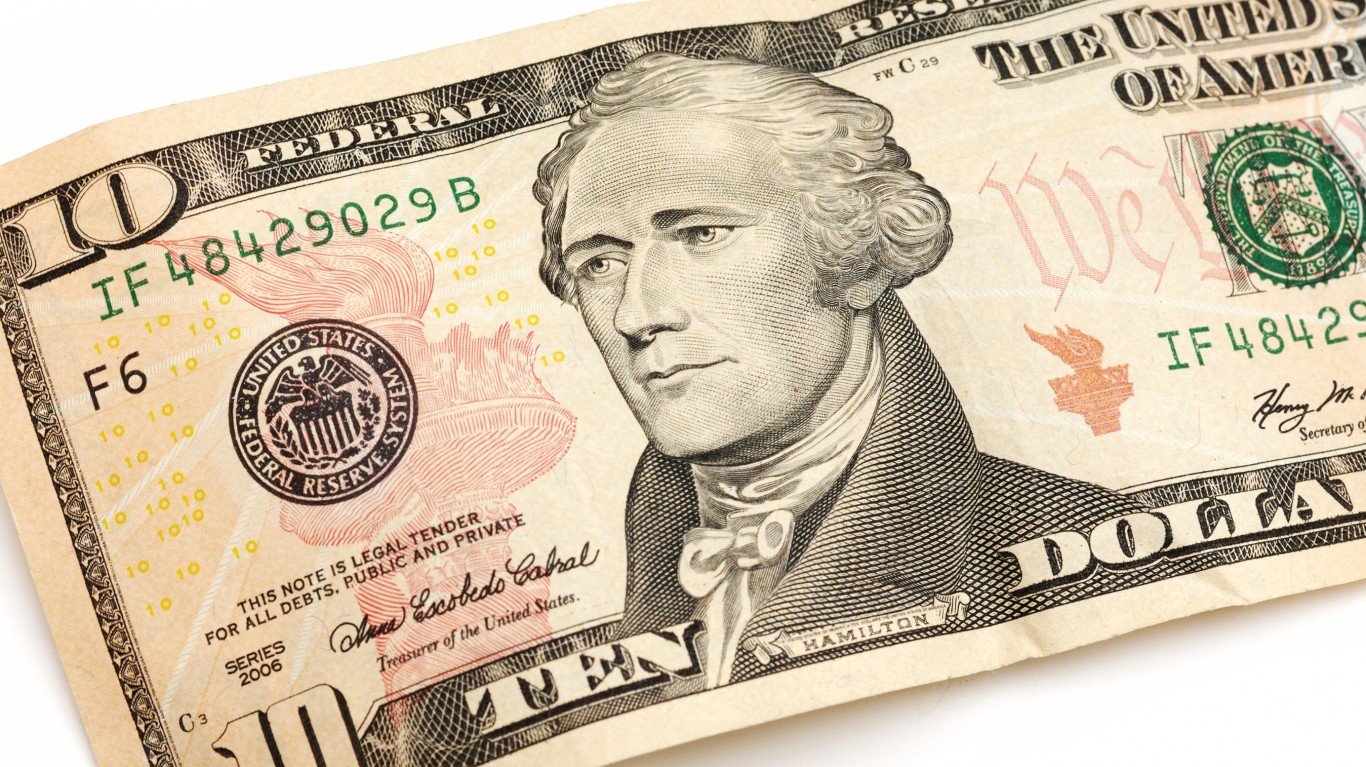

Usually when there is a widespread failure in the banking industry, it is due to many institutions doing the same thing, and often doing too much of it. The recent failures of Silicon Valley Bank and Signature Bank can be blamed as much on the Federal Reserve as it can be on poor stewardship from the banks.
The key words investors have been staring at the past few days is “unrealized losses.” Banks make money on their deposits by loading up on securities that pay more than the banks are paying their clients when they deposit money, and often banks use those deposits to buy short-term Treasury debt. The issue for Silicon Valley Bank (and perhaps many others) is that it bought a large amount of Treasury and mortgage-backed-securities debt prior to the massive one-year increase in the federal funds rate.
[in-text-ad]
In most cases, that would be fine, as the short paper would come due at par, and the banks could reinvest as higher yields. However, with longer maturities it was a different story. Say a five-year note that was bought in January of 2022 that had a 1.50% yield, but that note was trading at a 4.36% yield last week. As yields went higher, the prices dropped dramatically as bond prices fall when yields jump.
When the run on Silicon Valley Bank started last week, as investors rushed to get their money out, led by tech venture capital giant Peter Thiel, the bank was forced to sell securities that had massive unrealized losses that were reported at a stunning $1.8 billion. While they tried to raise additional capital, that move failed, and regulators shut down the bank and took control.
The question for savvy investors is whether this is an isolated instance, due to Silicon Valley Bank’s large dependence on tech money or is a systemic issue that could bring down the industry. Unlike 2008, this appears to be more isolated. The banks that are getting stung now are tech and cryptocurrency casualties, or so it would seem.
The time for aggressive stock investors to strike is when the proverbial blood is in the streets, and now may be that time. Six top companies should be able to easily navigate this issue, and all look like smart ideas for aggressive growth stock investors. While they are all Buy rated on Wall Street, it is important to remember that no single analyst report should be used as a sole basis for any buying or selling decision.
Bank of America
The company posted solid fourth-quarter results, and Buffett owns more than a billion shares. Bank of America Corp. (NYSE: BAC) is a ubiquitous presence in the United States, providing various banking and financial products and services for individual consumers, small and middle-market businesses, institutional investors, corporations and governments in the United States and internationally. It operates 5,100 banking centers, 16,300 ATMs, call centers and online and mobile banking platforms.
Bank of America has expanded into several new U.S. markets, with scale across the country positioning it ideally to benefit from accelerating loan growth over the next two years. Moreover, unlike smaller peers, scale allows the bank to increase investment substantially over the next few years without notably jeopardizing returns, driving further market share gains.
Shareholders receive a 3.45% dividend. Oppenheimer’s $53 target price on Bank of America stock is well above the $40.43 consensus target. The shares closed almost 6% lower on Monday at $28.51. Warren Buffett owns about a billion shares of this bank.
[in-text-ad]
BNY Mellon
Founded in 1784, this is the oldest company in the Fortune 500, and Warren Buffett has a sizable position. Bank of New York Mellon Corp. (NYSE: BK) provides a range of financial products and services in the United States and internationally. The company operates through the following three segments.
The Investment Service segment offers custody, trust and depositary, accounting, exchange-traded funds services, middle-office solutions, transfer agency, services for private equity and real estate funds, foreign exchange, securities lending, liquidity/lending services, brokerage and data analytics, clearing, investment, wealth and retirement solutions, technology and enterprise data management, trading, corporate trust, depositary receipts, payments, foreign exchange, liquidity management, receivables processing and payables management, trade finance and processing, collateral management and tri-party services.
The Investment and Wealth Management segment provides diversified investment management strategies and distribution of investment products, investment management, custody, wealth and estate planning, private banking, investment and information management services.
The Other segment engages in the leasing, corporate treasury, derivative and other trading, corporate and bank-owned life insurance, renewable energy investment and business exit activities. It serves central banks and sovereigns, financial institutions, asset managers, insurance companies, corporations, local authorities and high net-worth individuals and family offices.
Investors receive a 3.30% dividend. The $64 Barclays price target is a Wall Street high, and Bank of New York Mellon stock has a $56.47 consensus target. Monday’s $44.12 close was down almost 7% on the day.
Citigroup
This top bank stock had rallied nicely off the lows, but the current issues are weighing hard. Citigroup Inc. (NYSE: C) is a leading global diversified financial service company that provides consumers, corporations and governments a broad range of financial products and services. It offers services such as consumer banking and credit, corporate and investment banking, securities brokerage, transaction services and wealth management. And it operates and does business in more than 160 countries and jurisdictions in North America, Latin America, Asia and elsewhere.
Trading at a still very cheap 7.0 times estimated 2023 earnings, Citigroup stock looks very reasonable in what remains a volatile stock market and in a sector that has dramatically lagged. Buffett bought a massive $2.5 billion worth of stock back in the summer of 2022.
Citigroup stock comes with a 4.56% dividend. The Oppenheimer price target is $87, another Wall Street high. The consensus target is $58.32, and Monday’s closing price of $44.74 was down well over 7% for the day.
[in-text-ad]
Goldman Sachs
The white-glove Wall Street giant has had a rough go lately, as it strayed from its central business silos, but the stock looks to rebound the rest of the year. Goldman Sachs Group Inc. (NYSE: GS) provides a range of financial services for corporations, financial institutions, governments and individuals worldwide.
Its Global Banking & Markets segment provides financial advisory services, including strategic advisory assignments related to mergers and acquisitions, divestitures, corporate defense activities, restructurings, and spin-offs. It offers middle-market lending, relationship lending and acquisition financing, as well as secured lending, through structured credit and asset-backed lending and involved in resale agreements. This segment also offers client execution activities for cash and derivative instruments; credit and interest rate products; and provision of mortgages, currencies, commodities and equities-related products, as well as underwriting services.
The Asset & Wealth Management segment manages assets across various classes, including equity, fixed income, hedge funds, credit funds, private equity, real estate, currencies and commodities. It also, provides customized investment advisory solutions, as well as invests in corporate, real estate and infrastructure entities.
The Platform Solutions segment offers credit cards and point-of-sale financing for purchase of goods or services. This segment also provides cash management services, such as deposit-taking and payment solutions for corporate and institutional clients.
The dividend yield here is 3.17%. Bank of America has set its target price at $425, well above the $395.79 consensus target. Goldman Sachs stock closed on Monday at $315.51, down close to 4% on the day.
JPMorgan Chase
This stock trades at a still reasonable 12.0 times estimated 2023 earnings. JPMorgan Chase & Co. (NYSE: JPM) is one of the leading global financial services firms and one of the largest banking institutions in the United States, with about $2.6 trillion in assets. The company as it is today was formed through the merger of retail bank Chase Manhattan and investment bank J.P. Morgan.
JPMorgan has many operating divisions, including investment and corporate banking, asset management, retail financial services, commercial banking, credit cards and financial transaction services.
Top analysts are very positive on the stock, largely because the industry titan faces a continued broad recovery in nearly every aspect of its business:
[in-text-ad]
- Leading M&A advisory and capital markets product set and market share
- Massive footprint of corporate and commercial banking customers
- Sizable wholesale payments businesses.
The company has proven that it has the wherewithal to continually invest in people, products and platforms to further its market share base, extending its competitive advantage versus most peers.
JPMorgan Chase stock investors receive a 3.02% dividend. Oppenheimer has a $186 price objective. The consensus target is $158.37, and shares closed at $131.25 on Monday.
Morgan Stanley
This is another of Wall Street’s white glove firms, and it may be among the best buys in the banking and investment arena after this disaster. Morgan Stanley (NYSE: MS) is a global investment bank with leading positions in investment banking (M&A and equity underwriting), equity trading and wealth management, which contributes nearly 50% of firmwide revenues. The firm also has an asset management business, which adds to the lower-risk business profile the firm has pursued since the financial crisis.
In 2020, the Wall Street investment bank completed a $13 billion purchase of discount brokerage E-Trade. With 5.2 million customers, E-Trade was once a revolutionary platform that “helped usher in a dramatic shift among financial services firms” and fueled the rise of indexes and exchange-traded funds, making investing vastly easier for do-it-yourself investors.
Shareholders receive a 3.52% dividend. Morgan Stanley stock has a $102 price target at Credit Suisse, in line with the $102.14 consensus target. Shares ended Monday trading at $87.99.
Again, three of these six top Wall Street giants are solid positions in Buffett’s Berkshire Hathaway. It may make sense to buy partial positions now and see how this shakes out over the next few weeks. The financial crisis in 2008 forced banks to tighten their risk parameters and controls, and all the mega-cap banks are in far better shape now than they were then. Yet, since another shoe could drop, so caution makes sense when adding these on-sale blue-chip giants.
Sponsored: Attention Savvy Investors: Speak to 3 Financial Experts – FREE
Ever wanted an extra set of eyes on an investment you’re considering? Now you can speak with up to 3 financial experts in your area for FREE. By simply
clicking here you can begin to match with financial professionals who can help guide you through the financial decisions you’re making. And the best part? The first conversation with them is free.
Click here to match with up to 3 financial pros who would be excited to help you make financial decisions.
Thank you for reading! Have some feedback for us?
Contact the 24/7 Wall St. editorial team.
 24/7 Wall St.
24/7 Wall St. 24/7 Wall St.
24/7 Wall St.


